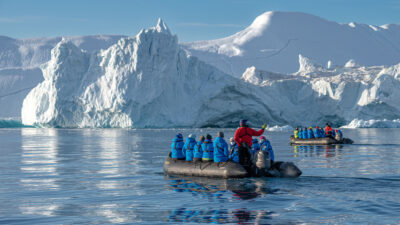Article
Buyer Be Fair: A Guide to Smart—and Responsible—Shopping in the Arctic
By Aaron Spitzer | September 10, 2020
Related expeditions: Heart of the Arctic, Greenland and Arctic Canada: High Arctic Explorer, Greenland & Wild Labrador: A Torngat Mountains Adventure, Iceland to Greenland: In the Wake of the Vikings, and The Northwest Passage

© Lee Narraway
Artist Qavavau Manumie demonstrates a printmaking technique in Kinngait (Cape Dorset), Nunavut.

















